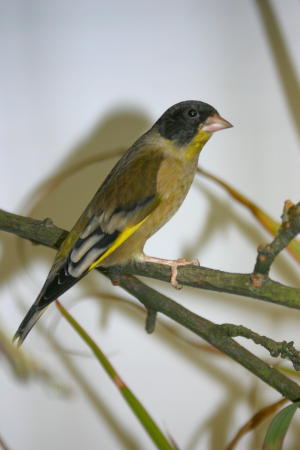Superregnum: Eukaryota
Cladus: Unikonta
Cladus: Opisthokonta
Cladus: Holozoa
Regnum: Animalia
Subregnum: Eumetazoa
Cladus: Bilateria
Cladus: Nephrozoa
Superphylum: Deuterostomia
Phylum: Chordata
Subphylum: Vertebrata
Infraphylum: Gnathostomata
Megaclassis: Osteichthyes
Cladus: Sarcopterygii
Cladus: Rhipidistia
Cladus: Tetrapodomorpha
Cladus: Eotetrapodiformes
Cladus: Elpistostegalia
Superclassis: Tetrapoda
Cladus: Reptiliomorpha
Cladus: Amniota
Classis: Reptilia
Cladus: Eureptilia
Cladus: Romeriida
Subclassis: Diapsida
Cladus: Sauria
Infraclassis: Archosauromorpha
Cladus: Crurotarsi
Divisio: Archosauria
Cladus: Avemetatarsalia
Cladus: Ornithodira
Subtaxon: Dinosauromorpha
Cladus: Dinosauriformes
Cladus: Dracohors
Cladus: Dinosauria
Ordo: Saurischia
Cladus: Eusaurischia
Subordo: Theropoda
Cladus: Neotheropoda
Cladus: Averostra
Cladus: Tetanurae
Cladus: Avetheropoda
Cladus: Coelurosauria
Cladus: Tyrannoraptora
Cladus: Maniraptoromorpha
Cladus: Maniraptoriformes
Cladus: Maniraptora
Cladus: Pennaraptora
Cladus: Paraves
Cladus: Eumaniraptora
Cladus: Avialae
Infraclassis: Aves
Cladus: Euavialae
Cladus: Avebrevicauda
Cladus: Pygostylia
Cladus: Ornithothoraces
Cladus: Ornithuromorpha
Cladus: Carinatae
Parvclassis: Neornithes
Cohors: Neognathae
Cladus: Neoaves
Cladus: Telluraves
Cladus: Australaves
Ordo: Passeriformes
Subordo: Passeri
Infraordo: Passerida
Superfamilia: Passeroidea
Familia: Fringillidae
Subfamilia: Carduelinae
Genus: Chloris
Species: Chloris ambigua
Subspecies: C. a. ambigua – C. a. taylori
Name
Chloris ambigua (Oustalet, 1896)
Synonymy
Chrysomitris ambigua (protonym)
Carduelis ambigua
References
Bulletin du Museum D'Histoire Naturelle, Paris 2: 186.
Nguembock, B., Fjeldså, J., Couloux, A., & Pasquet, E. 2009. Molecular phylogeny of Carduelinae (Aves, Passeriformes, Fringillidae) proves polyphyletic origin of the genera Serinus and Carduelis and suggests redefined generic limits. Molecular Phylogenetics and Evolution 51(2): 169–181. DOI: 10.1016/j.ympev.2008.10.022 Abstract & first page. Reference page.
Zuccon, D., Prŷs-Jones, R., Rasmussen, P.C., & Ericson, P.G.P. 2012. The phylogenetic relationships and generic limits of finches (Fringillidae). Molecular Phylogenetics and Evolution 62 (2): 581–596. Full text (PDF). DOI: .1016/j.ympev.2011.10.002 Reference page.
Vernacular names
български: Черноглав щиглец
català: Verdum capnegre
čeština: Zvonek černohlavý
Cymraeg: Llinos werdd Yunnan
dansk: Sorthovedet Grønirisk
Deutsch: Schwarzkopf-Grünfink
English: Black-headed Greenfinch
Esperanto: Nigrakapa fringo
español: Verderón cabecinegro
فارسی: سهره سبز سرسیاه
suomi: Kiinanvihervarpunen
français: Verdier d'Oustalet
italiano: Verdone testanera
日本語: ズグロカワラヒワ
မြန်မာဘာသာ: တောင်ပေါ်စာခေါင်းမဲ
Nederlands: Yunnangroenling
polski: Dzwoniec ubogi
português: Verdilhão-de-cabeça-preta
русский: Черноголовая зеленушка
svenska: Svarthuvad grönfink
ไทย: นกจาบปีกอ่อนเขียว
українська: Зеленяк чорноголовий
Tiếng Việt: Sẻ thông đầu đen
中文: 黑头金翅雀
The black-headed greenfinch (Chloris ambigua) is a small passerine bird in the family Fringillidae. It is found in the Chinese province of Yunnan, northern Laos, eastern Myanmar and adjacent areas of Vietnam, Thailand and Northeast India. Its natural habitats are subtropical or tropical dry forest and subtropical or tropical dry shrubland.
The black-headed greenfinch is a medium-sized finch with a length of 12.4–14 cm (4.9–5.5 in). It has a dark blackish-olive head, a pale pinkish-brown conical bill and a yellow patch on the wings. The sexes are similar.[2]
Taxonomy
The black-headed greenfinch was described by the French zoologist Émile Oustalet in 1896 and given the binomial name Chysomitris ambigua.[3][4] In the past the black-headed greenfinch was included with the other greenfinches in the genus Carduelis but molecular phylogenetic studies have shown that the greenfinches are not closely related to the other species in the genus Carduelis and they are now placed in the resurrected genus Chloris.[5][6] The genus had originally been introduced by the French naturalist Georges Cuvier in 1800.[7] The word Chloris is from the Ancient Greek word khlōris for the European greenfinch; the specific epithet ambigua is from the Latin ambiguus for "doubtful".[8]
Two subspecies are recognised:[6]
C. a. taylori (Kinnear, 1939) – southeast Tibet
C. a. ambigua (Oustalet, 1896) – east and northeast Myanmar, south China, Laos and the extreme northeast India[9][10]
References
BirdLife International (2016). "Chloris ambigua". IUCN Red List of Threatened Species. 2016: e.T22720347A94665586. doi:10.2305/IUCN.UK.2016-3.RLTS.T22720347A94665586.en. Retrieved 16 November 2021.
Clement, P. (2020). del Hoyo, J.; Elliott, A.; Sargatal, J.; Christie, D.A.; de Juana, E. (eds.). "Black-headed Greenfinch (Chloris ambigua)". Handbook of the Birds of the World Alive. Lynx Edicions. doi:10.2173/bow.bkhgre1.01. S2CID 216306924. Retrieved 23 October 2017.
Oustalet, Émile (1896). "Notes sur les oiseaux recueillis dans la Yun-Nan par le Prince Henri d'Orléan, dans le course de son dernier voyage du Tonkin aux Indes". Bulletin du Museum d'Histoire Naturelle. 2: 183–187 [186].
Paynter, Raymond A. Jnr., ed. (1968). Check-list of birds of the world, Volume 14. Vol. 14. Cambridge, Massachusetts: Museum of Comparative Zoology. p. 238.
Zuccon, Dario; Prŷs-Jones, Robert; Rasmussen, Pamela C.; Ericson, Per G.P. (2012). "The phylogenetic relationships and generic limits of finches (Fringillidae)" (PDF). Molecular Phylogenetics and Evolution. 62 (2): 581–596. doi:10.1016/j.ympev.2011.10.002. PMID 22023825.
Gill, Frank; Donsker, David (eds.). "Finches, euphonias". World Bird List Version 7.3. International Ornithologists' Union. Retrieved 23 October 2017.
Cuvier, Georges (1800). Leçons d'anatomie comparée. Vol. 1. Paris: Baudouin. Table 2. The year on the title page is An VIII.
Jobling, James A. (2010). The Helm Dictionary of Scientific Bird Names. London: Christopher Helm. pp. 44, 102. ISBN 978-1-4081-2501-4.
Dalvi, S. (2013). "Elliot's Laughingthrush Trochalopteron elliotii and Black-headed Greenfinch Chloris ambigua from Anini, Arunachal Pradesh, India" (PDF). Indian Birds. 8 (5): 130.
Sharma, M.; Sangha, H.S.; Jain, A. (2014). "Some noteworthy records from the Lohit Valley, eastern Arunachal Pradesh, India" (PDF). Indian Birds. 9 (4): 88–92.
Retrieved from "http://en.wikipedia.org/"
All text is available under the terms of the GNU Free Documentation License


